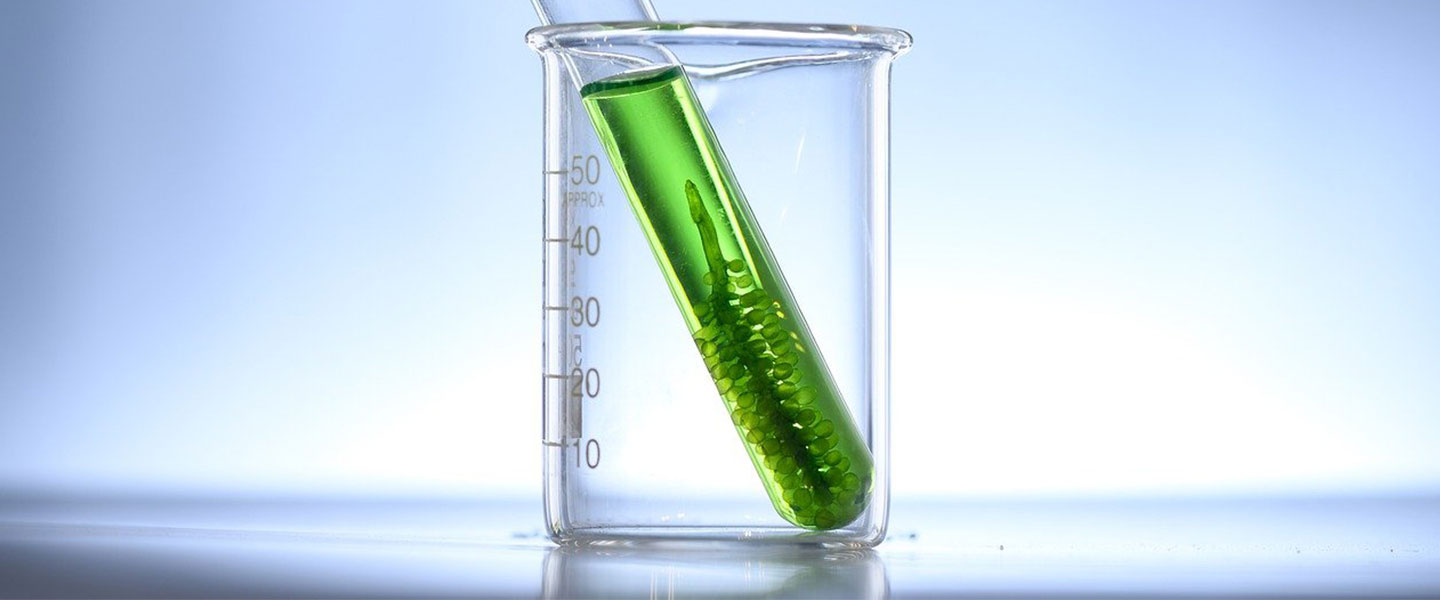Mixotrophy allows microalgae to obtain their energy from photosynthesis, but also from organic carbon. Discover all the advantages of this cultivation method
How to grow microalgae in mixotrophy?
Microalgae have a rapid growth capacity and are used in fields as diverse as health, cosmetics, food, and even in the energy sector. Some of them, the autotrophs, use photosynthesis to grow. Others, the heterotrophs, assimilate organic carbon to grow. There is a third mode of nutrition that some algae, such as Chlorella, can use: mixotrophy. Organisms that have it have the amazing ability to choose between these two modes depending on the conditions of their living environment. How can the principle of mixotrophy be used to cultivate microalgae? What are its advantages and disadvantages?
Mixotrophy, cooperation between photosynthesis, and organic carbon assimilation
Autotrophic microalgae rely on photosynthesis just like green plants for their growth. This phenomenon, which is the basis of life on Earth, enables algae to synthesise glucose, which serves as a source of energy, by combining water and carbon dioxide (CO2) in which the carbon is in its mineral state. The oxygen produced during this process is released into the external environment. Chlorella cultivation in photobioreactors applies this principle. Our SALT photobioreactors are designed for autotrophic cultivation and are therefore equipped with LEDs. Some of our users have already successfully used them for heterotrophy.
Heterotrophic organisms sustain themselves by ingesting organic carbon such as glucose, which they find in their living environment by consuming organic matter rich in carbohydrates, lipids, and proteins. Heterotrophy is a mode of nutrition present in many living beings such as animals, fungi, protozoa, and bacteria. It is used in fermenters.
Mixotrophic organisms can choose either of these systems depending on their environment. They are able to produce glucose using carbon dioxide and water in the presence of light as well as directly assimilate organic carbon in the absence of light. In nature, mixotrophic organisms often use both modes simultaneously.
Mixotrophic cultivation of microalgae
Microalgae are grown on a large scale in fermenters containing a carbon substrate that feeds them so that they produce large quantities of biomass. Low-intensity, short-duration light is regularly introduced into the culture to activate the algae’s light-sensing organelles such as chloroplasts.
Once activated, these photoreceptors increase the yield of the microalgae and the production of molecules of interest. Moreover, by modifying the wavelength of the light or by using a light mode in the form of a flash, it is possible to direct the production of the algae in culture towards a particular type of molecule.
It is a system that allows the advantages of both autotrophy and heterotrophy to be exploited.
The advantages and disadvantages of this type of culture
Mixotrophic microalgae cultivation allows for much higher productivity than other production methods and can reach up to 250 g of dry matter per litre. This production rate can be up to ten times higher than algae cultures in photobioreactors. Knowing that Chlorella is rich in starch and have many tonic and detoxifying properties, their culture in mixotrophy is an interesting option.
The molecules of interest that can be produced in mixotrophy include sugars and polysaccharides, amino acids, antioxidants, pigments, and valuable fatty acids such as DHA or EPA.
The primary market for microalgae is the food sector. They are used either in unprocessed or processed form, as they are an important source of protein, polyunsaturated fatty acids, vitamins, and minerals.
The process of growing microalgae in mixotrophy is highly scalable and does not require geographical constraints related to the duration of sunlight. However, if the molecule of interest is a pigment, the presence of sunlight or artificial light is essential.
The environmental impact of a mixotrophic microalgae culture is relatively low, because:
- Energy consumption is low: the light provided for the autotrophic phase is of low intensity and sporadic.
- Water consumption is limited because the system operates in a closed circuit.
- The carbon balance is positive, as the CO2 produced during the heterotrophic phase is consumed during the light phase.
Nevertheless, the implementation of a mixotrophic algae culture represents a rather high investment cost. In addition, there is a high risk of contamination of the culture by microorganisms such as bacteria or fungi.
Maintenance and operating costs are also high, as external and sterile carbon sources must be regularly supplied to the culture.
Conclusion
Microalgae are an incredibly valuable resource. The number of species is estimated at several hundred thousand, but only a few are currently cultivated industrially for biomass and high value-added derivatives.
Mixotrophic production is a very interesting alternative, both from the point of view of production capacity and the possibility of regulating the culture to select the molecules of interest.
Nevertheless, this cultivation process must evolve to reduce production and operating costs, which are major obstacles to its use.



